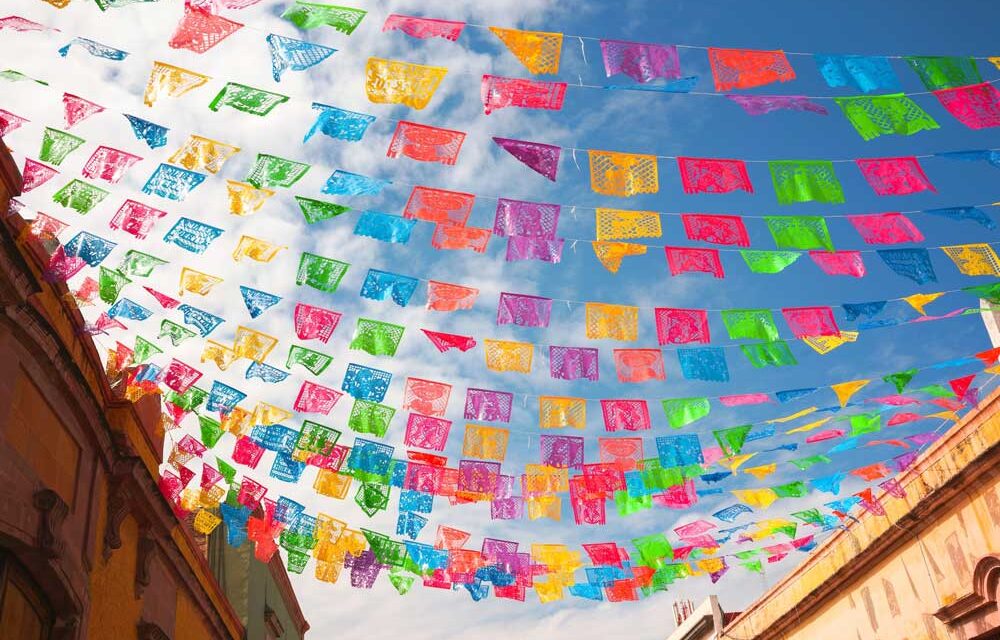In celebration of National Hispanic Heritage Month, September 15 – October 15, 2023, I would like to share with you this appropriate essay. For my research I went to my personal home library and searched for a book written by Germán Arciniegas, a Columbian public official and professor, entitled, Latin America: A Cultural History, which I bought over half a century ago. In particular, Chapter Three–What the Spaniards Brought to America–provides elucidating information that supports her magnificent Script. Sometimes, we may take for granted, or may not remember, or may not know all the contributions Spain made to our culture. Starting with the Conquistadors who brought the horse, armor and weapons made of steel, and gunpowder. Later, other Spaniards brought donkeys, bulls, cattle, hens, pigs, and fierce dogs. Credit is given to the men for bringing the dogs and to the Spanish women for bringing the cats to chase the imported mice.
According to Professor Arciniegas, during the times of Hernán Cortés, the silkworm and the mulberry trees were introduced. These items had been brought to Spain by the Moors, who had made Granada the center of the silk industry. At one point, the Spaniards brought the camel to Peru, but unfortunately, this venture did not work out. The last camel died in 1615, leaving no offspring. Other items that the Spaniards brought that came by way of the Moors were sugar canes, who had imported them from India. And it all started when Christopher Columbus brought some sugar-cane seeds to Cuba. Another food staple that came with Columbus was the rice, who the Arabs had also brought from India to Spain. Fruits that came from Spain to New Spain were the mangos, the common and the red-stone peaches, apricots, apples, pears, figs, pomegranates, and sweet and sour cherries. A Dominican friar by the name of Tomás de Berlanga was responsible for bringing the bananas.
Let’s not forget the herbs that are used for cooking, like the onions and the garlic. And the monks specialized in cultivating the following aromatic herbs: balm gentle, mint, sweet basil, marjoram, thyme, and rosemary. Other food staples New Spain received from the Spaniards were: wheat, barley, rye, chickpeas, cabbage, lettuce, endives, asparagus, spinach, celery, parsley, lentils, red beans, almonds, walnuts, chestnuts, flax, hemp, alfalfa, limes, lemons, grapefruits, pears, and plums, and a great variety of flowers. Credit is given to Bernal Díaz del Castillo, a soldier with Hernán Cortés during the conquest of Tenochtitlán, and who later wrote a book titled, Verdadera Historia de la conquista de la Nueva España, for bringing seven orange seeds. In 1520, the mandarin orange came by way of the Philippines. And, three years after the founding of Santiago, Chile, the first grapevine was planted. The olive tree came not too long after. Before the end of the sixteenth century, Chile was exporting olive oil to Peru.
And, in the realm of musical instruments, Professor Arciniegas states that, “The Spaniards brought the harp, which became popular in Paraguay, Peru, Chile, Colombia, and Venezuela….The violin, trumpet, and clarinet also became popular and soon took their place in regular orchestras like those in Mexico City. The guitar, which had come to Spain from the Orient, began a whole family of instruments both large and small, such as the Mexican guitar, the charango of Argentina and Bolivia, the cuatro of Venezuela, and the tiple and requinto of Colombia. Then the tambourine arrived to play an essential role among the percussions,…In time, the accordion became the people’s instrument in Buenos Aires and on the Guajira Peninsula of Colombia,…”
J. Gilberto Quezada and his wife Jo Emma live in San Antonio, Texas. He is a retired educator and an author, writer, essayist, and poet. Quezada is the author of the award-winning political biography, Border Boss: Manuel B. Bravo and Zapata County, published by Texas A&M University Press. He currently serves on the Editorial Board of Catholic Southwest, A Journal of History and Culture. Quezada is the recipient of the 2023 distinguished and prestigious Dr. Carlos E. Castañeda Award for meritorious service to the Texas Catholic Historical Society.










